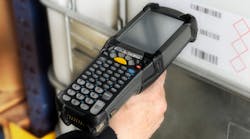One of the maintenance tools that came to prominence in the 1990s was the computerized maintenance management system (CMMS). Initially, maintenance managers saw it as a way to replace the cumbersome paper card system and similar paper-based systems. The problem in many plants today is that’s still the primary concept of the CMMS.
Some of the early CMMS vendors developed low-price, desktop computer-based systems geared toward this usage. But even those had untapped capabilities. Quite a bit of time has passed in the software world since then, and what you can do with a modern CMMS would have astounded the early adopters.
For example, it has bar code support. You don’t need expensive bar code scanners to use this feature, either. You can download an app for that, and use smartphones to scan those codes. With bar codes, you positively ID an asset. This beats standing on your head with a flashlight to read a paper or metal equipment tag. The bar code can be wirelessly uploaded into the CMMS, allowing the technician to immediately access information about that asset.




